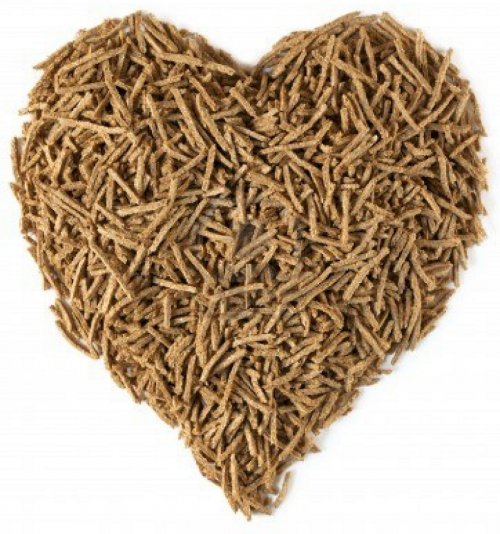
Although it cannot be considered a “nutrient”, dietary fibre must be considered a fundamental part of our daily diet.
Dietary fibre mainly consists of the cell walls of plants and their fruits; it cannot be digested by the small intestine as our organism is lacking in the enzyme required to digest it, therefore it transits into the large intestine until it is excreted. According to whether its main constituents are water soluble or not, it can be split into soluble and insoluble fibre. Both types can be found in different proportions in food and have different effects on the digestive, intestinal and metabolic processes.
Soluble fibre like gums, pectin, inulin, mucilage and polysaccharides with low molecular weight are mainly contained in pulses, fruit, whole grain cereals, bran, some plants and algae; they absorb and withhold water, expanding and forming viscous substances; soluble fibre can slow down digestion and the absorption of carbohydrates, therefore reducing the glycaemic peak after lunch and the insulin response. This can be useful for diabetics to improve the control of blood sugar levels. It is also responsible for a reduction in the absorption of fat and therefore reduces blood cholesterol levels, playing an important role in the prevention of heart and coronary disease. In fact, research continues to show that diets with high dietary fibre protect against coronary heart disease.
By increasing the mass of food ingested without adding calories and slowing down gastric emptying it acts by increasing the feeling of satiety and can represent a support for weight control.
Soluble fibre is more easily fermented by the intestinal microflora. Once it reaches the large intestine, it is partially or completely fermented and therefore develops its prebiotic activity.
Short chain fatty acids, which are produced when fibre is fermented by intestinal bacteria, are an important source of energy for the cells in the colon and its wellbeing, increasing the absorption of some micronutrients and reducing the growth of pathogenic bacteria, lowering intestinal pH.
Insoluble fibre (cellulose, hemicellulose, lignin) can mainly be found in whole grain cereals, green vegetables, nuts and linseeds, and acts prevalently on the operation of the gastrointestinal tract. It delays
gastric emptying, softens stools and facilitates intestinal transit, reducing the contact time between waste toxins (produced during digestion) and the intestinal mucosa. Therefore, it has a detox action and is important for the prevention of constipation, a concomitant cause of severe intestinal diseases, haemorrhoids and diverticulitis.
For a healthy person it is recommended to consume approximately 30-35 grams of fibre per day.
In order to obtain all the benefits of dietary fibre it is important to vary the source of fibre in the diet. Diets based on fruit, vegetables, pulses and whole grain cereals not only provide fibre, but also other nutrients and essential dietary components for good health. As always we recommend getting them from organic foods!
Here they are:





